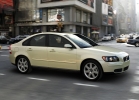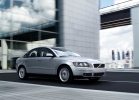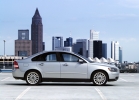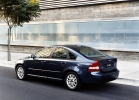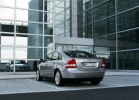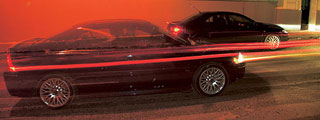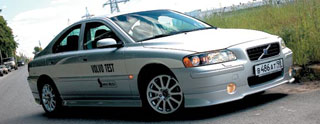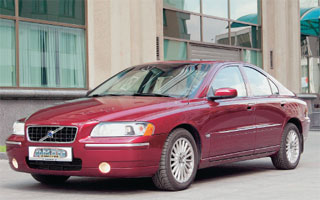Test drive Volvo S40 2004 - 2007 sedan
Volvo S40 and Volvo V40 in detail. The youngest is in the family
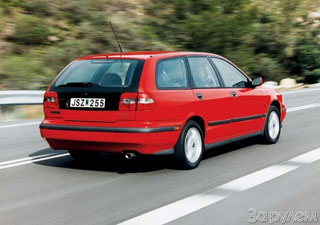 The fortieth model replaced Volvo-440/460 and immediately gained many fans. Even by clothing, this is a completely different car: if not a class, then a rank higher.
The fortieth model replaced Volvo-440/460 and immediately gained many fans. Even by clothing, this is a completely different car: if not a class, then a rank higher. The S40/V40 asset has a spacious interior with good sound insulation, a powerful ventilation system, a hot stove. Her predecessor, created in collaboration with Renault, did not differ reliability, but the new model (this time developed this time, together with Mitsubishi) has won the sympathy not only of dandy, but also pragmatists over the years. There are almost no frankly weak places here, but the Swedes managed to completely cure the car from childhood diseases only during restyling (see the history of the model).
In Russia, the main part of the Sedan Sedan cars. Spacious station wagons V40, as usual, in the minority. Most of the cars offered with air conditioning, an electric packet (including the front seats) and an audio system. The prices in the market do not depend much on the configuration, mainly on the engine and the year of production. Three-five years will cost 1218 thousand dollars, seven-eight-year-old copies from 8 to 10 thousand. Below seven thousand prices, these models do not fall, so the cheap option can be hidden by expensive repairs for original spare parts.
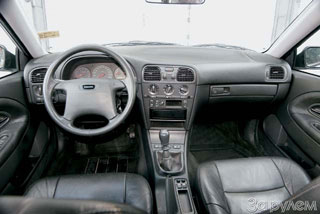 NECESSARY AND SUFFICIENT
NECESSARY AND SUFFICIENT The Volvo S40/V40 installed engines of 22 models (including diesel) and six gearboxes (two of which are automatic). There is no point in the subtleties too much: there are five basic gasoline engines, and all of them are present on the Russian market to one degree or another. There are almost no diesel engines: economy in our conditions is too expensive! There is practically no gas 1.8 liters. The most common engines with a volume of 1.6 and 1.8 liters. The first was attached only with a mechanical KP, the second was combined with a machine gun. Both options for fans of smooth acceleration, for dynamic driving power of the engines are clearly not enough: 1.8 liters with mechanics are already acceptable, but the optimal motor is two -liter. There was also his boost option with a low -pressure turbine. But the truly hurricane motor is rare 1.9t: it accelerates the car to hundreds in just 7.3 s, and the maximum speed reaches 235 km/h. And, unlike other engines content with AI-95, requires an expensive AI-98.
The main concern of the owner is not to miss the deadline for replacing the timing belt. In our conditions, the recommended interval is 75 thousand km (on every fifth then), although in Europe they reach up to 120 thousand. The cliff threatens the overhaul of the engine, so you should not save. At the same time we change the videos. An expensive hydraulic tensioner and an additional video were installed on old machines, a mechanical tensioner, with a spring, and the circuit was abolished.
The replacement of the belt here is not easy, especially on restyled engines with gas distribution phase adjustment. It is necessary to hang out the engine, fix the shaft in a certain position with a word, do not even try to do this without special knowledge and skills have a Volvo specialists!
At the same time, pay attention to the belt of the drive of auxiliary units, especially its rollers. On the old engines there were two stretch and round -ups. The latter often jammed, and the belt failed. After restyling, the only video remained, it serves for a long time.
All motors are sensitive to the quality and quantity of oil: the hydraulic compensators of valve gaps, the gas distribution phases on new engines are subject to failures (the malfunction gives itself out in the camshaft drive zone) and the hydraulic belt tensioner on the old ones. With active driving, oil consumption between 4 to 8 liters. For the normal operation of the factory, 400 g per 1000 km. There is no level sensor here, and the lamp lights up too late when the process has already gone. Therefore, do not be lazy to get the probe more often and make up for the oil level, and take the canister on vacation in the reserve.
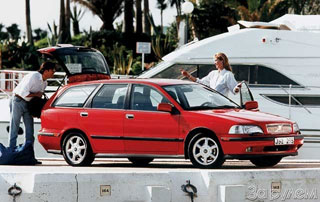 Burdened heredity
Burdened heredity Mechanical gearboxes for the magpie migrated with Volvo 460, along with congenital diseases of the leaking seals and flimsy plastic bushings. After restyling, they were replaced by original Volvsky, with a working clutch cylinder in the box itself. The clutch in this version works more clearly, and there are no complaints about mechanics. Original automatic boxes go well (four-, after five-speed).
Circules with entire covers have been serving for many years. Before restyling, the covers were made of ordinary soft rubber, after a more rigid and stronger elastomer. The protection of the bearings of the front hubs has improved and anthers appeared. Previously, they were not there, and because of the mud and water, the bearings had to be changed after the mileage of 80100 thousand km. The operation is laborious.
The disc brakes in all the wheels will last a long time if the calipers are periodically cleaned of dirt and cover the moving parts and support surfaces with copper lubricant. This is especially true for the rear brakes, dirt causes rapid wear of the linings. The sensors of wear and tear are acoustic, but their voice is weak. Keep this in time and listen to the squeak that has appeared in time.
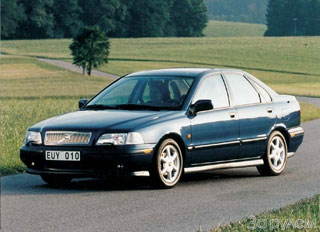 Strong backbone
Strong backbone The suspension of the younger Volvo in Russia holds well as well as well. The racks of the reptile stability of the front suspension serve about 100 thousand km, the remaining details of the lever and the shock absorber stand for 150 thousand.
A multi -link design is behind. Change the transverse levers due to the wear of the silent blocks is about the same 150 thousand km. Before restyling, large silent blocks of the lower longitudinal levers were handed over before others (the rubber was exfoliated from the metal) and the arc of the rubber upper supports of the telescopic rack. Since 2001, these nodes began to serve, as a rule, at least 150 thousand km.
If during the passage of irregularities from behind, a quiet, but distinct knock, do not rush to shake the suspension. Perhaps he is emitted by hard cables of a handbrake. It is enough to fix or slightly shift the branches.
What is good Russian?
There is no special Russian configuration for Volvo, and why in the homeland of this car they know firsthand about winter. But there are three suspension options: speaker, comfort and sport. Everything is present on the Russian market, but the vast majority of cars with a speaker: here an acceptable clearance is combined with fairly rigid shock absorbers. The option of comfort with softer settings is found two to three times less often, and there are very few sports with which the car is both tougher and lower. If the height of the springs can be determined by the eye, then the type of shock absorber is clarified by the sticker on its case. Therefore, do not rush to tear off the peeling pieces of paper will come in handy.
Wolvo starts well. Scandinavians do not save on the battery: it is full -size, with a replacement of problems there will be no problems. Sometimes in severe frost, when the engine is launched, the immobilizer malfunction indicator lights up. After warming up the salon, it usually goes out and does not cause other trouble. The reason for poor contact in the immobilizer relay circuit. It is possible to defeat the defect with the replacement of the relay and the tourniquet of wires. If the engine malfunction lamp caught fire, it is possible that the ABS sensor of the left front wheel was bored (it is associated with the engine control system). Both malfunctions fall under the guarantee, not only the main, but also extended. The main one has been valid for three years and completely covers all expenses extended for another year, while the client pays only half the amount. Today in the secondary market there are still many warranty machines. In addition, they are all restyled, which means that already brought to mind. They should take a closer look at them.
The history of the model
1995. The Volvo S40 sedan and the V40 station wagon are represented. P4 gasoline engines: 1.8 l, 8590 kW/116122 hp and 2.0 l, 100 kW/136 hp Turbodiesel P4, 1.9 l, 70 kW/95 hp Front drive, M5 or A4.
1997. The gasoline engine P4, 1.6 liters, 80 kW/109 hp
1998. P4 gasoline engines with turbocharged: 2.0 l, 181 kW/160 hp. and 1.9 l, 147 kW/ 200 hp
year 2000. Restyling and facelifting. Wings, headlights, rear lights have changed. Six airbags were added to standard equipment (frontal with a two -stage disclosure). On the engines there was a system for changing the phases of gas distribution, their power characteristics changed. The P4 engine appeared on liquefied gas: 1.8 liters, 88 kW/120 hp. The four -speed automatic transmission was replaced by a five -speed one. 2004. Change of generation of the model.
Anatoly Sukhov
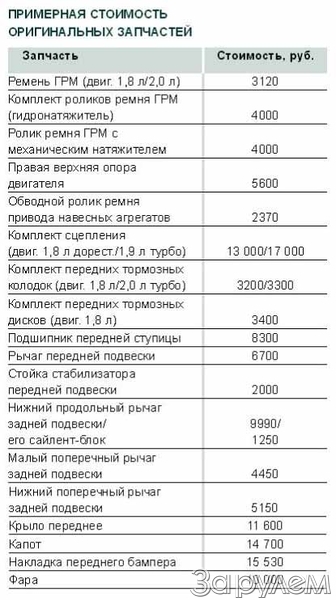
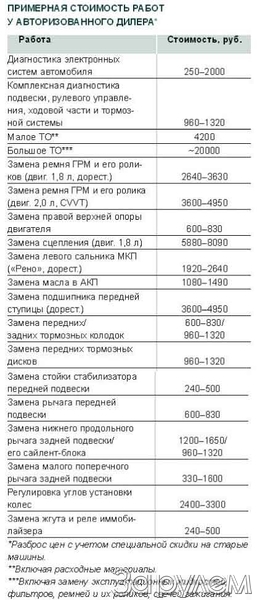
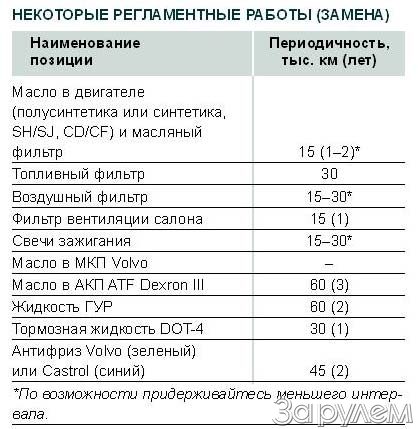
A source: The magazine "Driving"
Video Crash tests Volvo S40 2004 - 2007
Test drives Volvo S40 2004 - 2007
Krash -test Volvo S40 2004 - 2007
Krassh Test: Detailed Information34%
Driver and passengers
18%
Pedestrians
40%
Children-passengers

